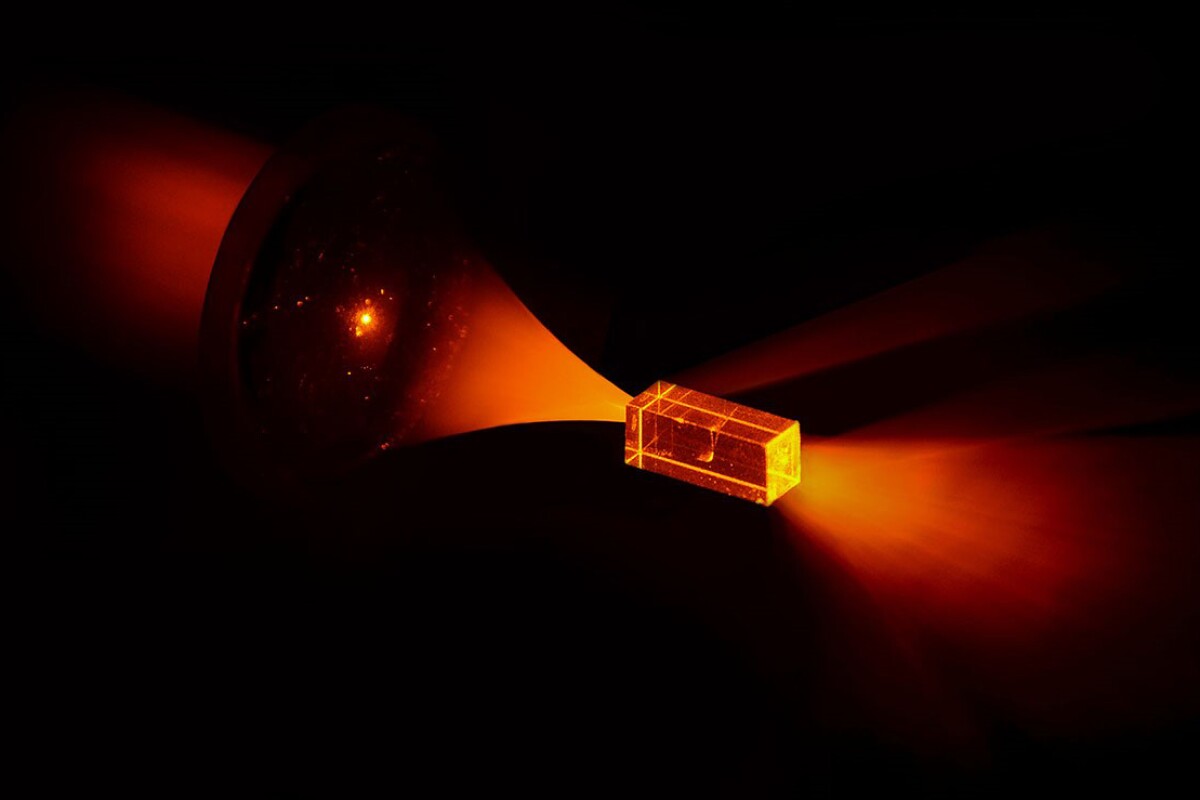Researchers from the Australian National University (ANU) and the University of Otago in New Zealand have created a prototype quantum hard drive that may fundamentally alter the realm of secure, long-distance data encryption. Using atoms of the rare-earth element europium embedded in yttrium orthosilicate (YSO) crystals, the scientists have shattered previous records for quantum information retention by creating a storage device capable of holding quantum state information for up to six hours at a time.
Quantum data encryption already offers the promise of intrinsically secure electronic data interchange over relatively short distances (up to around 100 km (62 mi) or so). However, this latest research may help enable a worldwide quantum-encrypted communications network by providing unprecedented storage capabilities and effectively negating the instability problems inherent in currently available technology.
"We believe it will soon be possible to distribute quantum information between any two points on the globe," said Manjin Zhong, a researcher on the project from the ANU’s Research School of Physics and Engineering (RSPE). "Quantum states are very fragile and normally collapse in milliseconds. Our long storage times have the potential to revolutionize the transmission of quantum information."
Unlike standard electronic communications networks where the transmission signal is simply boosted by strategically-spaced amplifiers every so often along the length of the signal path, quantum information requires the use of quantum memories in the form of matter-based qubits (“quantum bits”) held in storage nodes, each connected to the next in a continuous series of individual optical paths.
Unfortunately, this convoluted method is necessary because, at best, any attempt to amplify quantum-based information will add "noise" to the information and, at worst, will completely collapse its quantum spin state. As a result, quantum-encrypted data transmission networks currently comprise a large number of daisy-chained memory units whose long-term stability and reliability is questionable.
But more than this, the extremely long distances involved in global communications makes such a network of series-connected quantum memories impractical from an engineering viewpoint and prohibitive from a cost perspective.

Despite some promising progress made by other researchers, no other scientific experimentation has ever yielded such lengthy storage capabilities or offered such promise to long-distance quantum-encrypted data transmission as the ANU/University of Otago research.
"Our storage times are now so long that it means people need to rethink what is the best way to distribute quantum data," said Zhong. "Even transporting our crystals at pedestrian speeds we have less loss than laser systems for a given distance."
Even though the researchers cannot yet write a full qubit, they can change the quantum state of the nuclear spin of photons in the yttrium orthosilicate (YSO) embedded europium atoms using a laser. This state is then maintained for up to six hours at a temperature of around two degrees Kelvin (-271° C/-456° F) and in powerful – 1 Tesla – fixed and oscillating magnetic containment fields.
"The two fields isolate the europium spins and prevent the quantum information leaking away," said Dr Jevon Longdell of the University of Otago.
Excited and optimistic about the series of tests of quantum mechanics that a quantum optical hard drive will enable, ANU scientists are also cautious about future developments.
"We have never before had the possibility to explore quantum entanglement over such long distances," said Associate Professor Matthew Sellars, leader of the research team. "We should always be looking to test whether our theories match up with reality. Maybe in this new regime our theory of quantum mechanics breaks."
The research was published in the journal Nature.
Source: ANU





